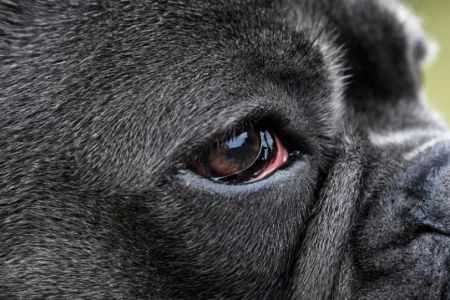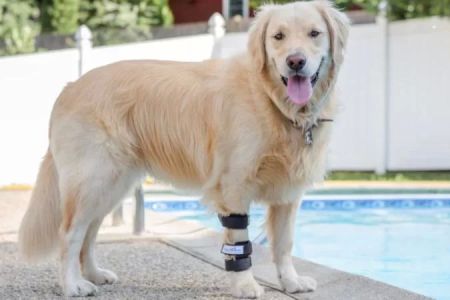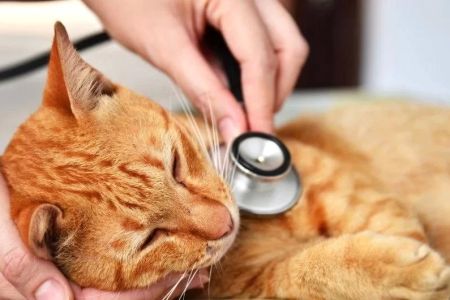What Could Be Causing My Dog's Excessive Eye Discharge and Red Eyes?
If you're a dog owner, you've likely noticed your furry friend occasionally experiencing watery eyes or redness in their eyes. While these symptoms may seem minor at first, they can indicate a variety of health concerns ranging from mild irritations to more serious infections. As a responsible pet owner, it's essential to understand the causes of excessive eye discharge and red eyes, how to manage them, and when it's time to seek professional help. In this article, I will share some of the most common causes, offer advice on how to alleviate these symptoms, and provide real-life insights to help you better care for your dog's eyes.
Common Causes of Eye Discharge and Redness in Dogs
Excessive eye discharge and red eyes in dogs can be caused by a variety of factors, each of which requires different approaches for treatment. Here are some of the most common causes:
1. Conjunctivitis (Pink Eye)
Conjunctivitis is one of the most frequent causes of red eyes and eye discharge in dogs. This condition occurs when the conjunctiva, the tissue that covers the white part of the eye and the inside of the eyelids, becomes inflamed. Conjunctivitis can be triggered by bacterial or viral infections, allergies, or irritants like dust, smoke, or chemicals. The symptoms usually include redness, swelling, and watery or thick discharge. If your dog’s eyes look puffy or excessively watery, conjunctivitis could be the culprit.
2. Allergies
Just like humans, dogs can suffer from allergies that cause their eyes to become inflamed and watery. Common allergens include pollen, dust mites, and even certain foods. If your dog experiences seasonal changes in their eye discharge or has a history of other allergic reactions like itching or sneezing, allergies might be the cause. Keep in mind that allergies are not always easy to pinpoint, and your veterinarian might need to conduct tests to identify the specific allergens affecting your dog.
3. Eye Infections
Infections can occur in the eyes due to bacteria, viruses, or fungi. When left untreated, these infections can cause significant discomfort and can even lead to vision loss. The symptoms of an eye infection can include excessive discharge, redness, squinting, or even swelling of the eyelids. Eye infections are often accompanied by other signs of illness, such as fever or lethargy, so it’s important to consult a vet if you suspect an infection.
4. Dry Eye (Keratoconjunctivitis Sicca)
Dry eye is another condition that can cause excessive eye discharge in dogs. It occurs when there is a lack of tear production, leading to dry, irritated eyes. As a result, your dog’s body tries to compensate by producing thick, mucous-like discharge. Dry eye is often seen in older dogs, or dogs with certain breed predispositions, such as Bulldogs or Shih Tzus. If left untreated, dry eye can lead to more severe complications, including corneal ulcers.
How to Treat Your Dog’s Eye Discharge and Redness
Treating excessive eye discharge and red eyes in dogs depends on the underlying cause. Here are some general treatment tips that can help:
1. Clean Your Dog's Eyes Regularly
If your dog’s eyes are watery or discharging, gently clean the area around their eyes using a soft cloth or cotton ball soaked in saline solution. This helps remove any debris and prevent further irritation. Be sure to use a clean cloth each time to avoid transferring bacteria or allergens.
2. Use Eye Drops or Ointments
If your dog has been diagnosed with an eye infection or conjunctivitis, your vet may prescribe eye drops or ointments to help alleviate the symptoms. These medications can reduce inflammation, clear up infections, and help keep your dog’s eyes comfortable. It’s essential to follow the vet's instructions carefully when administering any eye medication.
3. Treat the Underlying Cause
If allergies are the cause of your dog’s red eyes and discharge, your veterinarian may recommend antihistamines or other allergy treatments. For dry eye, treatments such as tear-stimulating medications or artificial tears may be prescribed. It’s important to address the root cause of the problem to provide long-term relief for your dog.
When to See a Veterinarian
While some mild cases of eye discharge may resolve on their own with basic care, it’s crucial to consult a veterinarian if:
- Your dog’s eye discharge becomes thick, green, or yellow.
- Your dog is squinting or showing signs of pain (e.g., rubbing their eyes or pawing at their face).
- The redness in the eyes persists or worsens over time.
- Your dog’s vision seems affected, such as not responding to movements or appearing disoriented.
- There are other signs of illness, like lethargy, loss of appetite, or fever.
Visiting a vet ensures that you can get an accurate diagnosis and appropriate treatment to help your dog feel better. In some cases, early intervention can prevent more serious health problems down the road.
Real-Life Experience with My Dog's Eye Issue
I remember the first time I noticed my dog, Max, had red eyes and excessive eye discharge. I thought it was just a minor irritation, maybe from dust or allergies. But as the days went on, his condition didn’t improve, and I started to get concerned. After consulting with our veterinarian, I learned that Max had a mild case of conjunctivitis that required antibiotic eye drops. The experience taught me the importance of not ignoring eye problems in dogs and seeking professional advice when needed.
Conclusion
As a dog owner, it’s essential to stay vigilant and recognize when something is amiss with your pet’s health. Excessive eye discharge and red eyes can often be a sign of an underlying issue, ranging from infections to allergies. By understanding the potential causes and knowing when to seek veterinary care, you can ensure your dog’s eyes remain healthy and comfortable. Always trust your instincts as a pet owner, and if you're ever in doubt, don’t hesitate to consult your vet for the best course of action. Your dog’s well-being is worth the extra effort!









